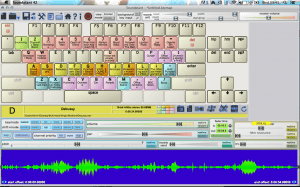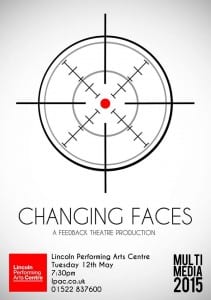FLORENCE NIGHTINGALE
When I am no longer, even a memory – just a name.
ROSA PARKS
The other passengers there reluctantly gave up their seats.
F. NIGHTINGALE
Florence Nightingale.
EMMELINE PANKHURST
You have to make more noise than anybody else, you have to be more obtrusive than anybody else.
R. PARKS
But I refused to do so.
E. PANKHURST
Where they have to choose between giving us freedom, or giving us death.
SIMONE DE BEAUVOIR
[Translated] I didn’t lead the life of a housewife – the most oppressive for women – and so avoided the servitude of their condition.
E. PANKHURST
That is the whole history of politics.
S. DE BEAUVOIR
[Translated] Later, when I began to look around me, I saw the truth of the feminine condition.
MARILYN MONROE
But please don’t make me look like a joke. (she laughs)
GLORIA STEINHAM
I keep meeting women who I’ve heard all my life are bitchy and pushy and so on and so forth. I meet them and they are nice compassionate people.
MARGARET THATCHER
No… No… No!
BETTY FRIEDAN
For those of us who started it, for you who will carry it on. The women and the men.
G. STEINHAM
But it’s hard for me to remember that.
MADONNA
She seemed very in charge of what she was doing and she also had a sort of wittiness about her.
M. THATCHER
What is the point in trying to get elected to parliament.
PRINCESS DIANA
It takes just a brief glance at the television or the newspapers to realise that much of the news is sad news.
MOTHER TERESA
I was sick and in prison and you visited me.
MADONNA
She was a role model.
EMMA WATSON
Today we care launching a campaign called HeForShe
PRINCESS DIANA
Tonight we have some good news to celebrate.
E. WATSON
For the record, feminism by definition is the belief that men and women should have equal rights.
J.K ROWLING
A woman can do magic just as powerfully as a man can do magic.
E. WATSON
If not me, who? If not now, when?
ELLEN PAGE
Because loving other people starts with loving ourselves and accepting ourselves.
MALALA YOUSAFZAI
And I’m proud that I’m the first pakistani and the first young woman or the first young person who is getting this award. It’s a great honour for me.
OPRAH WINFREY
My wish for you is that you continue.
E. WATSON
Men, I would like to this opportunity to extend your formal invitation. Gender equality is your issue too.
O. WINFREY
Continue to let humour lighting the burden of a tender heart in a society known for cruelty.
M. YOUSAFZAI
A girl has the power to go forward in her life.
O. WINFREY
Continue to remind the people that each is as good as the other, and that no-one is beneath you or above you.
PATRICIA ARQUETTE
We have fought for everybody else’s equal rights.
M. YOUSAFZAI
She’s not only a mother, she’s not only a sister, she’s not only a wife. But a girl has the – she should have an identity.
O. WINFREY
Continue, and by doing so, you and your work will be able to continue eternally.
P. ARQUETTE
It’s our time to have wage equality once and for all.
E. WATSON
I’m here to ask you, what is the impact you can have? How? What? Where? When? And with who? We want to help. We want to know, and we want to hear from you. Thank you very much.


